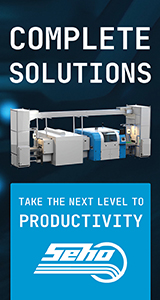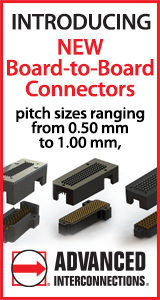|

|
|
| Ask the Experts | |||||||
|
|||||||
|
October 26, 2017 - Updated January 25, 2009 - Originally Posted Wave solder process issueWe use a hot air knife in our SMT wave soldering process. We are seeing what appear to be deformed, unwetted solder joints after the board has moved past the air knife. Can anyone tell me what may be causing this? We have adjusted the air pressure up and down but can't seem to find a setting that keeps this from happening. J. S. |
|||||||
| Expert Panel Responses | |||||||
|
This question is very interesting as I've not been asked this in thirty years. Not to get into historical information on the development of the air knife but its main function was to do exactly what you are seeing, identify bad solder joints. The molten solder uses a couple forces while making the solder joint. The first force is its adhesive forces, i.e. the creation of the Copper/Tin intermetallic compound to the surfaces being contacted by the molten solder. The second force is the physical surface tension of the solder itself forcing the molten metal into a ball or sphere. Since liquids have no form and they take the form of any container they are placed into, when left to the open environment while maintaining its molten state it will want to form into a ball and will not wet the surface to which it is being soldered. What is happening with your condition is that the forces of the air knife are not as great as the adhesion forces of the solder, but are stronger than the surface tension forces of the molten metal. When this occurs the molten metal will be blown off the solder joint and it will exhibit a non wetting condition. What you have is boards that are not solderable and the air knife is inspecting these boards for you. It was designed to do this and evidently it still works. What can be done to improve the solderability of the boards is to contact the board manufacture and have conversations on final solderable finish on the board and have them provide you with information on the solderability test they are conducting on your boards. I hope this helps and if more is needed please contact me off line and I'll be more than happy to help.
Vice President, Technical Director EPTAC Corporation At EPTAC Corporation, Mr. Lambert oversees content of course offerings, IPC Certification programs and provides customers with expert consultation in electronics manufacturing, including RoHS/WEEE and lead free issues. Leo is also the IPC General Chairman for the Assembly/Joining Process Committee.
From what you describe, it sounds like the hot air knife may be too cold and it is causing the partially reflowed solder joints to cool resulting in the deformity that you are seeing. Try turning down the airflow or turning up the temperature on the air knife.
Regional Sales Manager OK International Inc. Ed Zamborsky is a Regional Sales & Technical Support Manager for Thermaltronics, located in New York. His position requires frequent customer visits throughout North America and the Caribbean and his position encompasses not only sales but the role of trainer and master applications engineer for all of Thermaltronics products. His expertise includes such specialties as hand soldering, convection and conduction reflow techniques, array rework, fluid dispensing equipment, and fume extraction. Ed has authored many articles and has presented many papers on topics such as; Low Volume SMT Assembly, Solder Fume Extraction, SMT Rework, BGA Rework, Lead-Free Hand Soldering, High Thermal Demand Hand Soldering, Lead Free Visual Inspection and Lead Free Array Rework.
Dewetted / unwetted solder is a sign that the solder alloy does not like the surface of the pads in question. It can be an oxidized pad or other form of residue or contamination on the pads in question. The hot air knife does not effect wetting and intermetallic growth formation unless the air knife is set way out of specification. I trust that is not the case because it sounds like you have had it for a while and understand how to adjust it. It sounds more like a surface contamination or oxidized pad issue than a hot air knife. I would turn off the air knife and see if the problem still exists and to review the surface of the pads in question and see if there is a visible problem with those pads. I would need a little more information about the board finish and the solder alloys being used and flux chemistry and board thickness and board layout to check for other variables that might contribute to the problem, but a first cut based on what you provided - it sounds like a pad finish issue.
VP Engineering Services STI Electronics Inc. Mark T. McMeen is STI Electronics Inc.ʼs Vice President of Engineering Services. He oversees the daily operations of the Engineering Services division of STI. He has over 18 years experience in the manufacturing and engineering of PCBs.
Are you using nitrogen gas in your air knife or just compressed air? Nitrogen gas will produce shiny joints, while the cheap compressed air will cause oxidation of the solder joints. Make sure you have the correct gas temperature, flow rate and angle of the air knife with respect to the pcb surface.
Managing Director, Asia Pacific ECD EH Lim has been in the PCB Assy industry since 1985, starting at Thomson/Singapore for 5 years before moving to Electrovert Asia Pacifc. Lim was Sales Director for Vitronics Soltec prior to joining ECD in 2007 as Managing Director for Asia Pacific.
|
|||||||
| Submit A Comment | |||||||
|
Comments are reviewed prior to posting. You must include your full name to have your comments posted. We will not post your email address. |
|
Free Newsletter Subscription
Circuitnet is built for professionals who bear the responsibility of looking ahead, imagining the future, and preparing for it. Insert Your Email Address |
|

|






